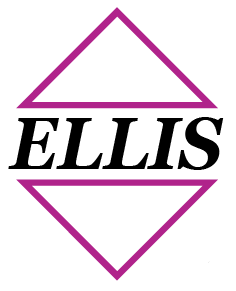Looking for Fall Protection Expertise in the USA? Want to inspect your buildings for violations? You can do this by working with Ellis Fall Safety Solutions services.
No one wants to think about that feeling. You’re on a stable surface until, suddenly, you’re not. The world is whipping by and gravity is having its way with humans. The construction industry has the highest risk of actual falls, but the truth is, falls are a serious hazard in any industry and building anchor points are often part of the problem. Falls are also expensive—they cost the U.S. economy approximately $70 billion each year in disability claims, medical expenses, and lost productivity. But fall safety isn’t just an economic cost. It’s a responsibility to your workers and contractors and that is why you need to be paying attention to it and what you can do to protect your people.
Unfortunately, falls are among the most common causes of serious work-related injuries. Fall injuries aren’t inevitable. Quite the opposite; they can be prevented quite easily—if you plan ahead, if you plan to get the job done safely, if you prioritize worker protection. Keep in mind that a fall injury doesn’t just affect the victim. It affects your entire workforce. They’re less likely to feel safe if they know a friend and colleague was hurt, and they’re less likely to trust you if they know such an accident could have been prevented.
We encourages the adoption of the Anchor Point process as it is described to be no less than a protocol used by a Team of Four Professionals; A Qualified Person of Registered Architect ARA and/or Registered Structural Engineer PE if any calculations and mathematical work who is required to certify designs. The team prepares drawings of anchors and numbering systems to cross-reference each anchor location and/or structural deficiencies for installing anchor points for fall protection lifelines and load lines for swing scaffolds and single point suspended scaffolds. A Certified Safety Professional who is capable of analyzing hazards with lifelines and load line use and misuse, reviews equipment instructions and prepares notices on the building of proper anchor usage requirements. Inspects annually for damage and reports to the building owner; A Subject Matter Expert who is a Competent Person representative, usually from a recognized window cleaning company capable of determining the correct location of each Anchor location for the work anticipated in conjunction with the owner’s representative; and finally a Competent Fabricator and Installer who is capable and experienced in using the drawings and with owner representative input to design, manufacture, install the Anchors successfully. A standardized test method of pulling one Anchor Point against another Anchor Point must be certified by the Structural Engineer for 360 degree reliability according to the OSHA Regulation. Tie-back anchor points are necessary to meet OSHA in addition to lifeline anchors with a maximum of 15 degree angled lines to the roof edge.
Contact Ellis Fall Safety now to discuss your recommendations to go forward for a local source of Anchor Point design, safety and fabrication vendors, including consideration of your existing vendors and answer your questions.
Ellis Fall Safety is your local source for Anchor Point design, safety standards, and fabrication and our team is ready for all your fall safety needs. The goal is to help educate business owners and the property managers who represent them by providing engineering and designs that enable height exposed workers to perform their duties without interference.
John Whitty is a Structural Engineer with 30 years of experience in rooftop anchors for window cleaners, fall protection engineering & regulations; and Jeff Strauss VP Operations 30 years with DuPont Safety in the plant, building safety, and training.
Dr. Nigel Ellis has many years of experience with the International Window Cleaning Association Safety Committee and has worked with OSHA since 1974 on window cleaning regulations including the latest regulations affecting building owners in 2016. He is the author of Introduction to Fall Protection Editions 1-5 (latest 2021).

